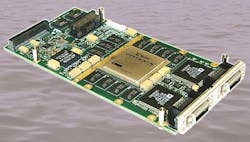Moog keeping ageing Marine Corps armored vehicles in the field with major vetronics upgrades
The gunner's hand station enables the AAV gunner to turn the vehicle turret, and to elevate the vehicle's weapons. "We took that hand controller and integrated it though the fire-control computer and the sight," Eschner says. Sight had laser range finder, thermal imager, and color day camera, and several zoom functions.
The Marine Corps has about 800 AAVs in service, and must keep these vehicles in the field since the EFV cancellation, and while the Marine Corps develops future generations of amphibious assault fighting vehicles.
The AAV was designed in the 1960s and had major upgrades in the mid-1980s to the AAVA71 configuration. It is a tracked amphibious armored personnel carrier that accommodates a crew of three and carries as many as 25 Marines into battle. It is armed with a .50 caliber machine gun, grenade launcher, and smoke-laying equipment.
Although Moog has not received contracts for production upgrades to the AAV, the company has performed demonstration tests for the Marine Corps, and has scheduled future tests involving moving targets, full-vehicle integration, and fire-on-the-move capability, Eschner says.
The vehicle uses CAN Bus for hull functions, and the RS 422 databus for turret electronics integration. The fire-control computer communicates with the FLIR sensor and gunner's touch screen, for example, via the RS 422 bus.
For more information contact Moog Space and Defense online at www.moog.com/about/space-defense-group, SAIC at www.saic.com, or the Naval Surface Warfare Center Crane Division at www.navy.mil/local/crane.
